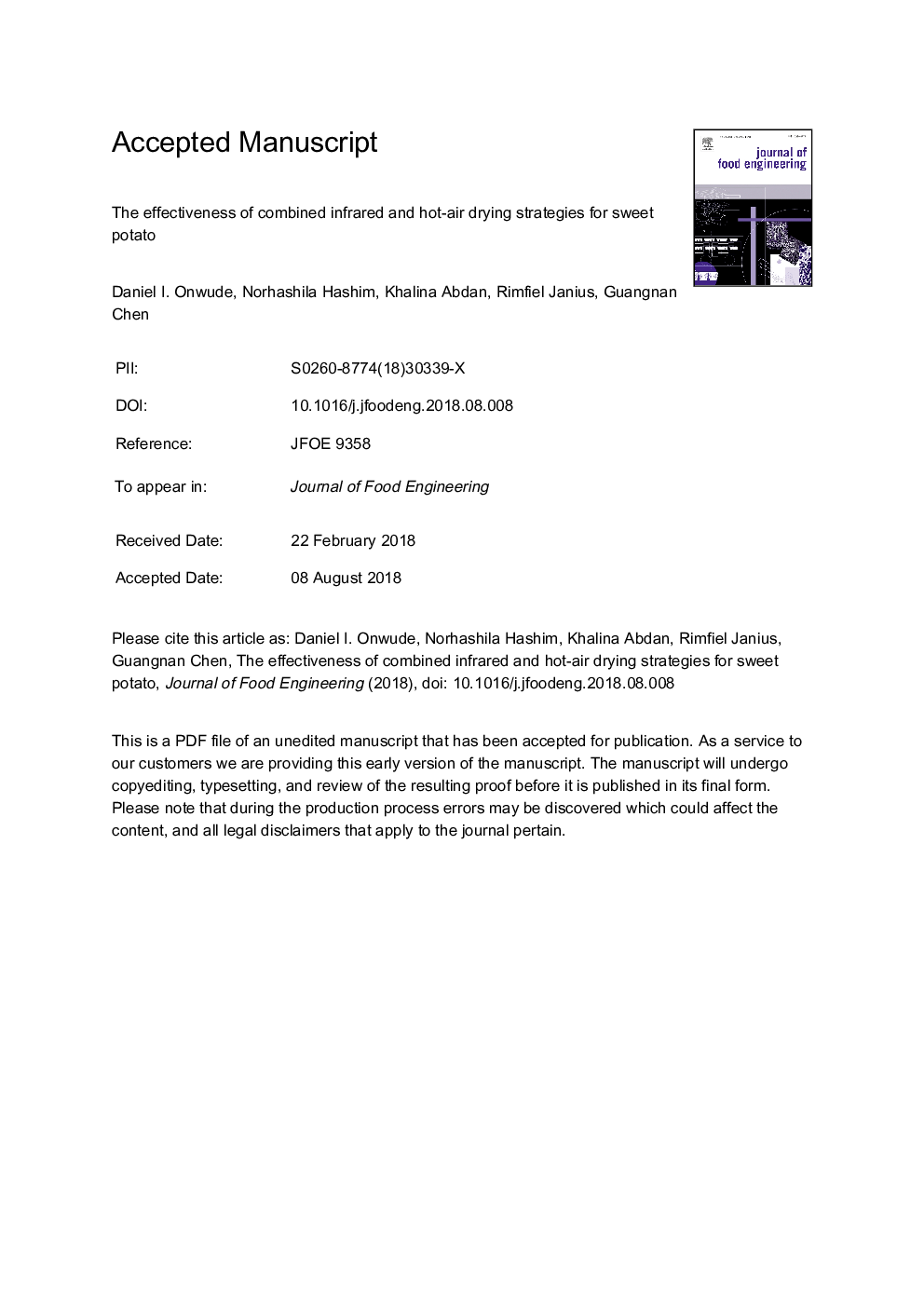| Article ID | Journal | Published Year | Pages | File Type |
|---|---|---|---|---|
| 6664349 | Journal of Food Engineering | 2019 | 53 Pages |
Abstract
This study examined the performance of different combined infrared (IR) and hot-air drying (HAD) strategies for sweet potato. Experiments were conducted for simultaneous infrared and hot-air drying, two-stage sequential hot-air and infrared drying, two-stage sequential infrared and hot-air drying, and intermittent infrared and hot-air drying in a laboratory scale combined infrared and hot-air dryer. The drying air temperature varied between 50 and 70â¯Â°C, the infrared intensity was 1100â¯W/m2, the air-velocity was 1.5â¯m/s, and the pulse ratio (PR) ranged from 1 to 3. Results indicated that the drying rate, drying time, effective moisture diffusivity, shrinkage, specific energy consumption (SEC), colour attributes and phytochemical compounds of sweet potato were affected by the different drying combination strategies. The drying kinetics, product shrinkage, and sample temperature were also influenced by drying time and air temperature. The two-term exponential model adequately explained the drying behaviour of sweet potato for all the different combination strategies. The intermittent IR and HAD combination strategy proved to be the most suitable based on the combined effect of total drying time (113-120â¯min), SEC (27.67-41.44â¯kWh/kg), total colour change (17.15-26.48) and bioactive compounds.
Related Topics
Physical Sciences and Engineering
Chemical Engineering
Chemical Engineering (General)
Authors
Daniel I. Onwude, Norhashila Hashim, Khalina Abdan, Rimfiel Janius, Guangnan Chen,
